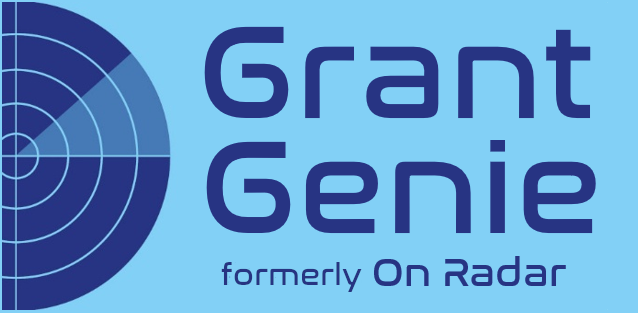
Non-Profit funding in minutes - not days!

Getting rejected for grants feels personal. After pouring hours into applications, crafting compelling narratives, and imagining the impact your project could have, that polite "thank you for your application, but..." email hits like a punch to the gut.
If you're facing a string of rejections, you're not alone. Even experienced charities go through dry spells. The question isn't whether you'll face rejection - it's how you'll respond when it happens.
Let's talk honestly about grant rejection, why it happens more often than you think, and most importantly, how to turn those "no" responses into future "yes" decisions.
The Reality Check: Rejection Rates Are Higher Than You Think
Before we dive into solutions, let's establish some uncomfortable truths about grant success rates:
Industry Average Success Rates:
This means that rejection is the norm, not the exception. If you're getting rejected for 80-90% of your applications, you're actually performing at industry average.
Why Good Projects Get Rejected (It's Not Always About You)
Funder-Side Reasons (60% of rejections):
Application-Side Reasons (40% of rejections):
The Hard Truth: Sometimes excellent projects get rejected simply because 200 other excellent projects applied for the same pot of money.
The Immediate Response: What to Do in the First 48 Hours
Step 1: Feel the Disappointment (But Set a Time Limit) Give yourself permission to be frustrated for 24-48 hours. Rejection hurts, especially when you've invested significant time and emotional energy.
Step 2: Request Feedback Immediately Send a polite email within 48 hours:
"Thank you for considering our application. To help us improve future submissions, would you be able to provide brief feedback on why our application was unsuccessful? Any insights would be greatly appreciated."
Response rates for feedback requests: About 30% of funders will provide some level of feedback if asked promptly and politely.
Step 3: Document Everything Create a rejection log including:
The Analysis Phase: Learning from Rejection Patterns
If You're Getting Rejected at the Eligibility Stage:
If You're Getting Rejected After Full Review:
If You're Getting Generic Rejection Letters:
The Strategic Pivot: Adjusting Your Approach
After 3-5 Rejections from Similar Funders: Your approach needs fundamental changes, not minor tweaks.
Potential Pivots:
After 10+ Rejections Overall: Consider whether grant funding is the right strategy for this particular project.
Alternative Funding Strategies:
Turning Rejection into Relationship Building
The Follow-Up Strategy That Actually Works:
Month 1: Send thank you note with feedback request
Month 6: Share a brief update on your project progress (even if unfunded)
Month 12: Inform them about project outcomes or new developments
Next funding cycle: Apply again with an improved application
Sample Follow-Up Email (6 months later):
"Following our unsuccessful application last year, I wanted to update you on our project progress. Despite not securing your funding, we've managed to launch a pilot version through {alternative funding source}. Early results show {specific outcome}. We'd welcome the opportunity to discuss our expanded plans when your next funding round opens."
Why This Works: Funders remember organisations that demonstrate resilience and keep them informed. You're building a relationship, not just submitting applications.
The Improvement Roadmap: Getting Better at Grant Applications
Quick Wins (Implement Immediately):
Medium-Term Improvements (3-6 months):
Long-Term Strategy (6-12 months):
When to Consider Professional Help
Hire a Grant Writing Consultant When:
Typical consultant success rates: 25-40% (but they're selective about which opportunities they pursue)
Cost-benefit analysis: If consultant fees are less than 10% of potential grant value and they double your success rate, it's usually worthwhile.
The Resilience Factor: Keeping Your Team Motivated
Managing Team Morale During Rejection Streaks:
Celebrate the Process, Not Just Outcomes:
Share the Bigger Picture:
Set Realistic Expectations:
Questions to Ask After Every Rejection
The Success Mindset: Reframing Rejection
Instead of: "We got rejected again"
Think: "We're building relationships and improving our applications"
Instead of: "They don't understand our work"
Think: "We need to communicate our impact more clearly"
Instead of: "Grant funding doesn't work for us"
Think: "We need to refine our strategy and targeting"
Remember: Every successful charity has faced multiple rejections. The difference is they learned from each one and kept improving their approach.
The Bottom Line: Rejection as Data, Not Defeat
Grant rejection isn't a judgment on your organization's worth or your project's value. It's data about funder alignment, application quality, and market timing.
The most successful grant writers:
Your rejection rate will improve over time if you:
The goal isn't to avoid rejection - it's to get rejected faster and learn quicker, so you can find the funders who are genuinely excited to support your work.
Every "no" gets you closer to the "yes" that will fund your project and create the impact your community needs.
Updated: 23rd Jun 25